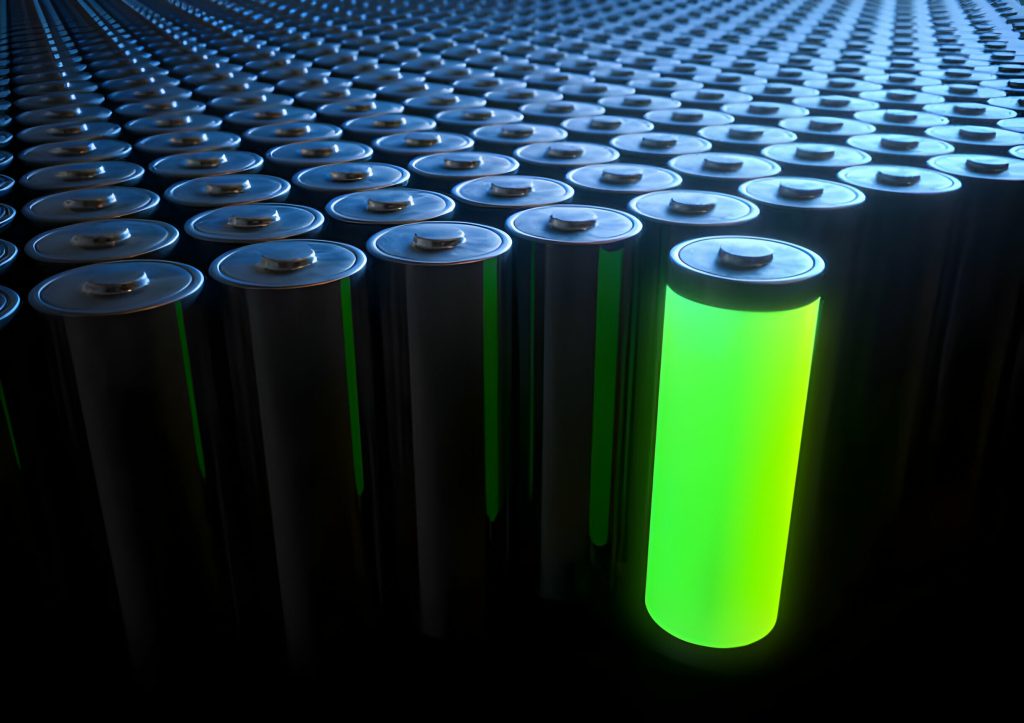A lithium-ion battery can last around 2-10 years without charge, depending on usage. Lithium-ion batteries have become an integral part of our daily lives with the growing reliance on portable electronic devices, such as smartphones, tablets, and laptops.
These rechargeable batteries are widely utilized for their high energy density, long cycle life, and lightweight characteristics. However, the lifespan of a lithium-ion battery largely depends on various factors, including usage patterns, environmental conditions, and maintenance.
Understanding the longevity of these batteries is crucial for optimizing their performance and ensuring efficient power management.
We will explore the factors that influence the lifespan of a lithium-ion battery, as well as provide tips on how to extend its longevity. Additionally, we’ll discuss the potential environmental impact of lithium-ion battery disposal and the importance of responsible recycling practices.
Factors Affecting Lithium-ion Battery Life
Various factors influence lithium-ion battery life, including usage patterns, temperature, and charging practices. Understanding these factors is crucial to determining how long a lithium-ion battery can last without requiring charging.
Factors Affecting Lithium-Ion Battery Life
Usage Patterns
Lithium-ion batteries are greatly influenced by how they are used. The frequency and duration of charging and the discharge rate all impact the battery’s lifespan. For instance, frequent shallow discharges are less taxing on the battery than deep discharges. Shallow discharges, where the battery is only partially discharged, can help prolong its lifespan.
Temperature
The operating temperature of a lithium-ion battery is critical in determining its longevity. High temperatures can accelerate the degradation of the battery, shortening its lifespan.
Conversely, low temperatures can also harm the battery’s performance, reducing capacity and causing internal resistance, leading to premature failure.
Charge Cycles
The number of charge cycles a lithium-ion battery undergoes can significantly impact its lifespan. A charge cycle is completed when the battery is discharged and recharged.
Every complete cycle contributes to the battery’s overall wear and tear, reducing its capacity over time. Partial charge cycles can be less taxing on the battery and may help extend its lifespan.
In summary, the factors affecting lithium-ion battery life are usage patterns, temperature, and charge cycles. Understanding and managing these factors can help maximize the lifespan and performance of lithium-ion batteries.
Remember these considerations to ensure you get the most out of your lithium-ion battery.

Typical Lifespan Of Lithium-ion Batteries
The typical lifespan of lithium-ion batteries is an essential factor to consider when it comes to the longevity of electronic devices.
Understanding the manufacturer’s claims and the real-world performance of these batteries can help users manage their expectations and make informed decisions about their usage.
Manufacturer’s Claims
Manufacturers often provide estimated lifespans for lithium-ion batteries, and these claims can vary widely based on the type of device and usage patterns. For example, a smartphone battery may have a lifespan of 300-500 complete charge cycles, while a laptop battery could endure 600-1000 cycles.
However, it’s important to note that these figures are based on ideal conditions and may not always align with real-world usage.
Real-world Performance
In real-world scenarios, several factors can impact the actual lifespan of a lithium-ion battery. Usage patterns, environmental conditions, and charging habits significantly determine how long a battery can effectively retain its charge.
For instance, frequent total discharges and exposure to extreme temperatures can accelerate the degradation of the battery, leading to a shorter overall lifespan.
I hope my answer meets your expectations.
Extending The Lifespan Of Lithium-ion Batteries
When maximizing the lifespan of your lithium-ion battery, it’s essential to follow certain practices. You can significantly prolong its longevity by adopting optimal charging methods, avoiding extreme temperatures, and storing your battery correctly. Let’s delve into these practices in more detail and explore how they can help you get the most out of your battery.
Optimal Charging Practices
Properly charging your lithium-ion battery is crucial for its longevity. Follow these tips to optimize your charging practices:
- Avoid frequent, partial charging: Frequent partial charging can degrade the battery capacity over time. Instead, aim for a full charge and discharge cycles.
- Don’t overcharge or undercharge: Overcharging can result in excessive heat generation and ultimately damage the battery. Similarly, avoiding deep discharges helps prevent strain on the battery cells.
- Use the correct charger: Always use the charger designed explicitly for your lithium-ion battery. Using incompatible chargers can lead to inefficient charging, affecting the battery’s health.
- Avoid interrupted charging cycles: Interrupted charging cycles can disrupt the battery calibration and reduce lifespan. It is recommended to let the battery charge entirely without interruption.
Avoiding Extreme Temperatures
Extreme temperatures can significantly impact the lifespan of your lithium-ion battery. To minimize the effects of temperature extremes:
- Avoid exposing the battery to excessive heat or cold: Extreme heat can accelerate its chemical reactions, causing it to degrade faster. On the other hand, extreme cold can increase the internal resistance and limit its capacity temporarily.
- Keep the battery at optimal temperatures: Ideally, store and operate your lithium-ion battery within 20 to 25 degrees Celsius (68-77 degrees Fahrenheit) for optimum performance.
- Please do not charge a hot battery: Charging an already hot battery can worsen its condition and potentially lead to safety hazards. Allow the battery to cool down before initiating the charging process.
Proper Storage
Proper storage is vital to maintain the health of your lithium-ion battery during periods of non-use or storage:
| Storage Recommendations | Tips |
|---|---|
| Avoid extreme temperatures | Keep your battery in a cool, dry place, away from direct sunlight. |
| Charge to around 50% capacity. | Before storing for extended periods (e.g., several months), it is advisable to charge the battery to approximately 50% capacity. |
| Store the battery in a safe container. | Ensure the battery is stored in a protective case or container to prevent physical damage. |
| Regularly check the battery. | Periodically inspect the battery for any signs of swelling, leakage, or physical damage. If any issues are detected, it’s recommended that the battery be replaced. |
By adhering to these practices, you can extend the lifespan of your lithium-ion battery, ensuring it remains reliable and efficient for a longer duration.

Signs Of Battery Degradation
Lithium-ion batteries degrade over time, affecting their lifespan. Signs of degradation include reduced battery life, increased charging time, and device overheating. Without regular charging, a lithium-ion battery can last around 2-3 years before showing signs of degradation.
Lithium-ion batteries are known for their long-lasting power but can experience degradation over time. It’s essential to be aware of the signs that your battery may be deteriorating so you can take the necessary steps to prevent further damage. Here are three key indicators to watch out for:
Decreased Capacity
One of the first signs of battery degradation is a decrease in its capacity. This means your battery no longer holds as much charge as it used to. You may find that your device’s battery percentage drops rapidly or dies quickly, even after a full charge. This capacity decrease can significantly affect your device’s usability and convenience.
Increased Charging Time
Another telltale sign of battery degradation is an increase in charging time. If your device takes longer to recharge than when it was new, it could indicate that your battery is wearing out.
Slow charging can be frustrating, especially when you’re in a rush and need your device ready quickly. It’s worth noting that other factors, like a faulty charger, can also cause longer charging times, so it’s essential to rule out any other potential issues.
Unusual Heating
Unusual heating of your device during usage or charging is yet another red flag of battery degradation. While it’s normal for devices to generate some heat, excessive heat is a cause for concern. Your battery deteriorates if your device becomes abnormally hot during regular use or when charging.
Excessive heat can decrease your battery’s lifespan and pose potential safety risks, so it’s crucial to address this issue promptly.
To sum up, watching for these signs of battery degradation can help you take proactive measures to ensure your lithium-ion battery’s longevity and efficient performance. If you notice decreased capacity, increased charging time, or unusual heating, it may be time to consider replacing your battery or seeking professional assistance.
Remember, a well-maintained battery can extend your device’s lifespan and provide a better user experience.
Enhancing Battery Endurance In Electronic Devices
When it comes to the lifespan of a lithium-ion battery without charging, you can enhance the battery endurance in your electronic devices in several ways.
By implementing power-saving features, monitoring battery health, and optimizing software, you can make your battery last longer and ensure the smooth functioning of your devices.
Power-saving Features
One effective way to extend your electronic devices’ battery life is by utilizing power-saving features. These features can help reduce your device’s energy consumption, enabling you to use it longer without recharging.
By employing power-saving modes or adjusting settings such as screen brightness, auto-lock, and background app refresh, you can maximize the battery performance and make it last longer.
Battery Health Monitoring
Monitoring the health of your battery is crucial in optimizing its endurance. Regularly checking the battery’s health can help you identify any issues or degradation affecting its performance. Many devices provide battery health information, allowing you to keep track of its condition.
By keeping the battery well-maintained and taking necessary steps to avoid extreme temperatures, you can prolong its lifespan and ensure it lasts longer between charges.
Software Optimization
The software running on your electronic device is a significant factor that affects battery life. By optimizing the software, you can reduce unnecessary background processes, improve efficiency, and minimize power consumption.
It is recommended to update your device’s software regularly to benefit from the latest optimizations and bug fixes that can improve battery performance. Closing unused applications and reducing multitasking can also help conserve battery power and extend endurance.

Credit: www.amazon.com
Do lithium batteries expire if not used
Lithium batteries can degrade over time, even if they’re not used. This degradation is often called “self-discharge” or “shelf-life.” Lithium batteries typically have a longer shelf life than other types of batteries.
However, they can still degrade over time due to various factors such as temperature, humidity, and the chemical properties of the battery components.
If left unused for an extended period, lithium batteries can lose their charge gradually, and in some cases, they may become unusable or less efficient. However, the rate at which this degradation occurs can vary depending on the specific type of lithium battery, storage conditions, and other factors.
Manufacturers usually provide guidelines for storing lithium batteries to help minimize degradation. Storing them in a cool, dry place at a partial charge (around 40-60% of their capacity) can help slow down self-discharge and extend their shelf life.
In summary, while lithium batteries can degrade over time if not used, proper storage and handling can help mitigate this degradation and prolong their lifespan.
How long do lithium batteries last in smoke detectors
The lifespan of lithium batteries in smoke detectors can vary depending on factors such as the type of smoke detector, the frequency of use, and the specific battery capacity. However, lithium batteries are known for their long shelf life and high energy density, making them a popular choice for smoke detectors.
Typically, lithium batteries used in smoke detectors can last anywhere from 5 to 10 years. Many smoke detector manufacturers design their products to be compatible with long-lasting lithium batteries to minimize the need for frequent battery replacements.
It’s essential to follow the manufacturer’s recommendations regarding battery replacement intervals and test smoke detectors regularly to ensure they function correctly.
While lithium batteries have a longer lifespan than traditional alkaline batteries, they still degrade over time, so it’s crucial to replace them as recommended to maintain the effectiveness of the smoke detector.
How long do lithium-ion batteries last in cars?
The lifespan of lithium-ion batteries in electric cars can vary depending on several factors, including the specific battery chemistry, the vehicle’s usage patterns, environmental conditions, and how well the battery is maintained.
Generally, lithium-ion batteries in electric cars are designed to last for several years and tens of thousands of miles.
Manufacturers often provide warranties for the battery packs in electric vehicles, with typical coverage ranging from 8 years or 100,000 miles to 10 years or 150,000 miles, depending on the brand and model.
These warranties typically guarantee that the battery will retain a specific capacity over the warranty period, ensuring the vehicle’s range remains adequate.
While the warranty period indicates the expected lifespan, many lithium-ion batteries can last well beyond the warranty period with proper care and maintenance.
Avoiding frequent deep discharges, using appropriate charging practices, and avoiding exposure to extreme temperatures can help prolong the battery’s lifespan.
As electric vehicle technology continues to evolve, advancements in battery chemistry, manufacturing techniques, and thermal management systems are expected to improve car-ion batteries’ longevity and durability further.
Frequently Asked Questions On How Long Can A Lithium-ion Battery Last Without Charging
How Long Can A Lithium-ion Battery Last Without Charging?
Lithium-ion batteries can last several years without charging, but it ultimately depends on the battery’s quality, usage, and environmental conditions. Generally, they can retain their charge for around 2-3 months when not in use. However, charging them at least once every few months is recommended to maintain their health and functionality.
Can Leaving A Lithium-ion Battery Uncharged Damage It?
Yes, uncharging a lithium-ion battery for an extended period can damage it. Inactive batteries can undergo self-discharge, leading to the battery’s voltage dropping below a safe limit. This can result in irreversible damage, decreased capacity, or a complete battery failure.
How Often Should I Charge My Lithium-ion Battery?
To optimize the lifespan of a lithium-ion battery, it’s recommended to charge it when the battery level drops to around 20-30%. Frequent shallow discharges and charges are better for the battery’s overall health than letting it drain entirely or continuously charging it to 100%.
So, aim for moderate, regular charging rather than waiting for the battery to reach critical levels before charging.
How long will a lithium battery hold a charge when not in use?
The duration a lithium battery holds a charge when not in use varies depending on temperature, battery quality, and storage conditions. Generally, lithium batteries can hold a charge for several months to a few years when properly stored, with a gradual self-discharge occurring over time.
Do lithium batteries degrade if not charged?
Yes, lithium batteries can degrade over time if not charged, leading to reduced capacity and performance.
How long do lithium batteries last uncharged?
Lithium batteries can typically last several months to a few years without being charged, depending on temperature and storage conditions.
What happens if you don’t charge a lithium-ion battery for a long time?
The lithium-ion battery can undergo self-discharge, leading to a gradual loss of charge, potential capacity loss, reduced performance, and possible damage if left uncharged for an extended period.
Conclusion
To sum up, the lifespan of a lithium-ion battery without charging depends on various factors, including usage patterns, temperature, and battery health. While the average duration may vary, it is generally recommended to avoid altogether discharging it and keeping it between 20-80% charge for long-term battery health.
Regular charging and proper storage conditions can significantly extend the battery’s life. To get the most out of your lithium-ion battery, it is essential to practice good charging habits and take care of its overall health.

I am a technology Specialized writer and blogger based in the USA & UK. I have four years of experience in Technology, Social Media and all types of Battery’s like Solar Battery,Car Battery,Lithium Battery etc. So I work on solving these issues and give various tips on these issues.
